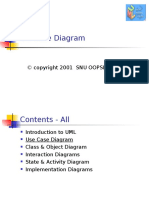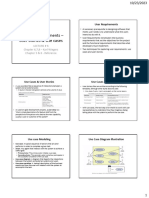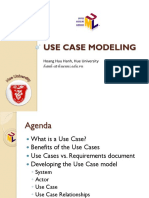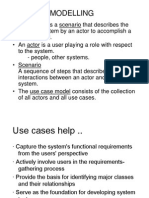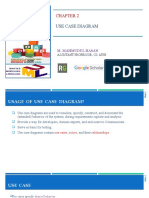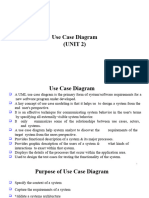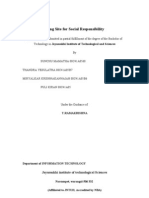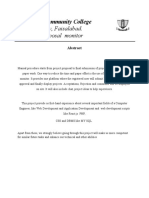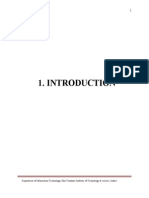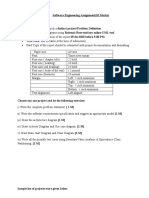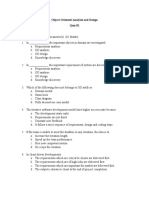0% found this document useful (0 votes)
81 views37 pagesUse Case Modelling
The document discusses use case modeling including what a use case is, actors, scenarios, and guidelines for defining use cases. It provides an example of a point of sale system and describes elements of use cases like the main success scenario and extensions. The document also discusses different formats for writing use cases and provides an example use case for processing a sale.
Uploaded by
Zorya UtrennyayaCopyright
© © All Rights Reserved
We take content rights seriously. If you suspect this is your content, claim it here.
Available Formats
Download as PDF, TXT or read online on Scribd
0% found this document useful (0 votes)
81 views37 pagesUse Case Modelling
The document discusses use case modeling including what a use case is, actors, scenarios, and guidelines for defining use cases. It provides an example of a point of sale system and describes elements of use cases like the main success scenario and extensions. The document also discusses different formats for writing use cases and provides an example use case for processing a sale.
Uploaded by
Zorya UtrennyayaCopyright
© © All Rights Reserved
We take content rights seriously. If you suspect this is your content, claim it here.
Available Formats
Download as PDF, TXT or read online on Scribd
/ 37






















